The Eastern Cape offers lush vegetation, undulating terrain and unique species unavailable elsewhere.
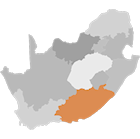
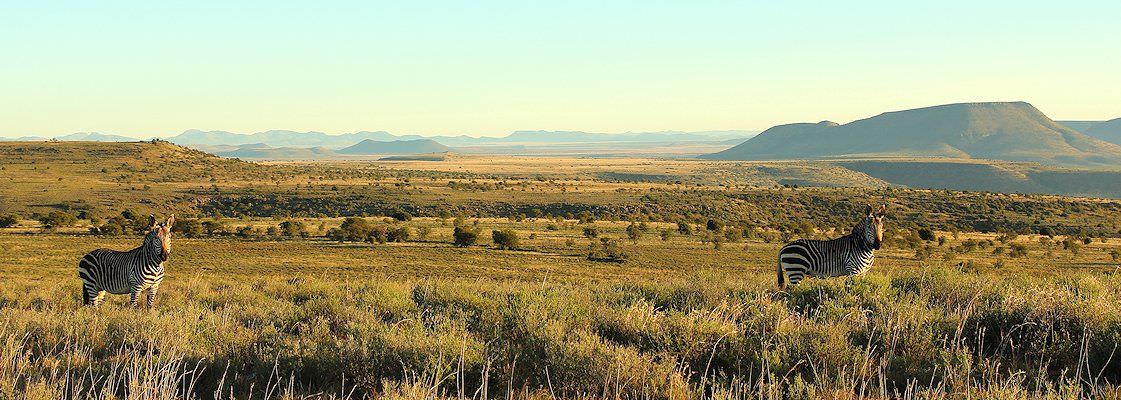
The Eastern Cape Province was once considered one of the richest wildlife areas in South Africa. Unrestricted hunting in colonial times, however, put quite a dent in the wildlife population of the era. Many animals were considered pests or a menace to the livelihood of farmers and human expansion. These animals were practically wiped out in many areas.
Through the efforts of national parks, game reserves and game concessions, the wilderness of the Eastern Cape has been relatively restored to its former glory. A wide variety of plains game species and dangerous game species are now available for trophy hunting in the Eastern Cape - even the tiny blue duiker, along with the unique opportunity to hunt the caracal with dogs.
After arriving in Johannesburg, clients either overnight in Pretoria on the first night of their safari and fly to Port Elizabeth on the following morning, or fly to Port Elizabeth on the same day (if their flight arrives before 11:00 am). The regional flight has a duration of 1 hour and 40 minutes. A drive of about one and a half hours then brings clients to the hunting camp.
The Eastern Cape is a year-round hunting destination with the only exception being the mid-winter months of June and July, when it can become bitterly cold.
The Eastern Cape is home to a number of national parks and reserves, most notably the Addo Elephant National Park and the Camdeboo National Park, where non-hunters who do not wish to accompany the day's hunt can enjoy game drives accompanied by a local guide. The coastline boasts some fine beaches that can be visited for a day of relaxing by the sea.
The terrain in the Eastern Cape ranges from very mountainous to vast plains and densely wooded coastal forest.
The region where these camps are located lies between the Drakensberg and the deep blue waters of the Indian Ocean.
Guests are accommodated in an African Style Camp, consisting of bungalows under thatch. The camp offers sweeping views of the surrounding hills as well as distant mountain ranges. Amenities at this Eastern Cape hunting camp is first-rate. It is one of the most luxurious camps utilized by AS Hunting Adventures in South Africa.
Central areas consist of a tastefully decorated lounge, dining room as well as a bar where we kick back our heals after returning from the days hunt. Meals are prepared to the highest standard by camp staff, who also attend to other needs guests might have. The swimming pool is an oasis on warm summer days, where non hunters can relax and soak up the African sun. An outside "BBQ" area provides the ideal nighttime venue for discussing the days hunt as well as the challenges that lie ahead while relaxing around a crackling fire under the star-studded sky.
This hunting camp in South Africa's Eastern Cape Province exudes a farm-style, countryside charm. With only four chalets, the camp is intimate and comfortable. You will find no cellular signal or internet access in this wild, off-the-grid corner of the country.
The chalets are spacious and private, including creature comforts like en suite bathrooms, coffee stations and miniature fridges. The grounds surrounding them are impeccably kept, with wildlife like springbok occasionally wandering through.
On site facilities range from an outdoor swimming pool for hot summer days and a boma area for festive meals. Fireside dining in the wilderness under the silvery expanse of the night sky is sure to be a memorable experience during your hunt.
The hunting packages listed below are the most popular amongst foreign hunters visiting South Africa. These fully inclusive packages offer both an exceptional African hunting experience, and great value for money.
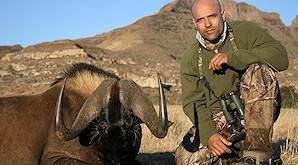
Black wildebeest are also known as 'white-tailed Gnu' for their long, horse-like tails. They typically occur in open plains or bushveld and are endemic to Southern Africa. Black wildebeest should typically be hunted with premium heavy for caliber bullets.
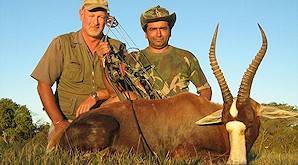
Blesbok are endemic to the open plains of South Africa. Both male and female blesbok carry horns that average at around 38cm (15 inches). In weight, blesbok males and females typically differ between 8-10kg.
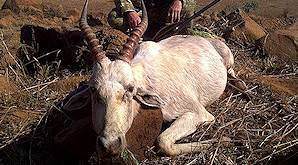
White blesbok only deviate from the common blesbok in their resemblance. Their white appearance is but a color mutation, and they are regularly found sticking out amongst herds of common blesbok.
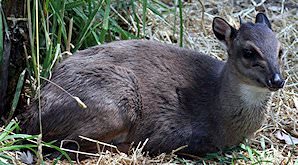
One of Africa's smallest species of antelope, the blue duiker's shy and secretive nature makes it a challenging hunt. Reaching only 30cm at shoulder height and weighing under 5kg, this mini antelope will prove difficult to find!
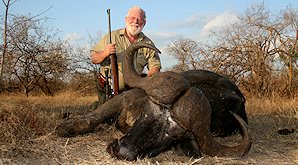
Cape buffalo form part of Africa's formidable Big Five and are quite dangerous and unpredictable. Nicknamed the 'Black Death' and 'widow maker', buffalo will prove one of the most challenging trophies to hunt.
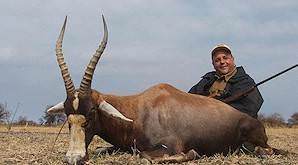
The bontebok is quite similar in appearance to a blesbok and the species are closely related. The bontebok, however, is more colorful, and contains more prominent white features on its stomach and hide.
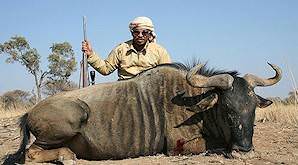
Blue wildebeest are prevalent throughout Southern and East Africa. Nicknamed "the poor man's buffalo", blue wildebeest are typically larger than black wildebeest and enjoy grazing in savanna bushveld and short grass plains.
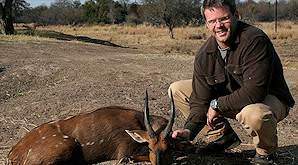
The smallest of the spiral-horned antelope, bushbuck are medium-sized with a series of white spots along the lower half of their bodies. Male bushbuck average at 79cm at shoulder height and 42kg in weight.
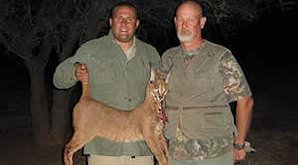
In the Eastern Cape, caracal are flushed out by dogs during a hunt. Africa's version of a lynx, the typically solitary caracal is often only encountered by chance and thus may require baiting.
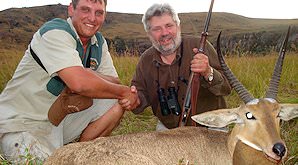
Also known as the southern reedbuck, the common reedbuck ram's horns average between 35 and 45cm (14-18 in). They reach 90cm at shoulder height. Reedbuck enjoy grazing in moist grasslands with tall grasses.
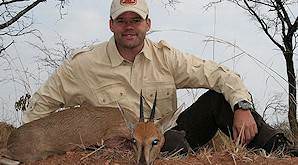
Also known as the common duiker, grey duiker are small antelope. They can survive without water, as they receive sufficient moisture from browsing and eating fruit. Grey duiker may prove difficult to hunt as they camouflage well.
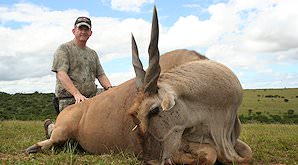
The common eland is Southern and East Africa's largest antelope. Males typically weigh in at 700kg (1 545 lbs), but can reach around 940kg (2 070 lbs). Its spiral horns range between 51 and 69cm (20 to 27 in) in length.
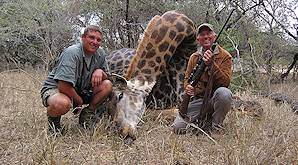
Averaging a height of 5 - 6m (16 to 20 ft) tall, the world's tallest mammal can also be hunted in Southern Africa. The giraffe's thick, tough skin will require the same bullet selection as you would use for an elephant.
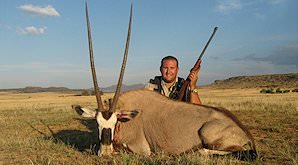
Gemsbok or giant oryx are known for surviving in harsh environments like the Kalahari Desert. They are coveted for their spectacular horns, which average at 85cm (33 in) in length.
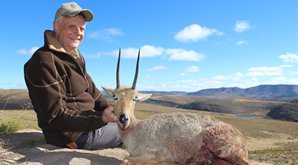
The grey rhebuck was named for its likeness to the European roe deer. Characterized by their thick, grey, woolly fur, grey rhebuck are skilled jumpers. They can easily be hunted with your favorite deer rifle.
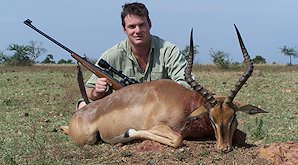
Impala are very common and hunted by most hunters that visit Southern Africa. They are ideal for the first hunt. Additionally, impala meat can be used for camp meat or baiting leopard on a Big Five hunt.
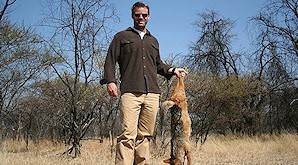
Black-backed jackals are much like the coyotes of North America. Many farms encourage jackal hunting to keep their numbers down - they typically prey on small antelope, vulnerable livestock and also scavenge.
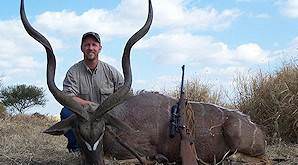
Greater kudu are coveted for their majestic spiral horns. Their horns reach an average of 120cm (47 in), with a record 187cm (74 in). Any length over 150cm (60 in) is considered an exceptional trophy.
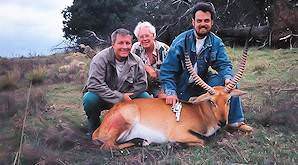
Lechwe are typically found in wet, marshy areas in Southern Africa. Equipped with proportionally longer hind legs and a water-repellent substance that covers their legs, lechwe can move quite fast (and swim well) in water.
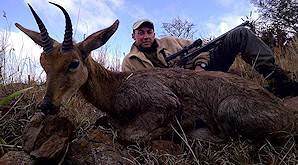
As his name implies, the mountain reedbuck is generally hunted in the more mountainous regions of sub-Saharan Africa. Expect to do quite a bit of climbing on a mountain reedbuck hunt!
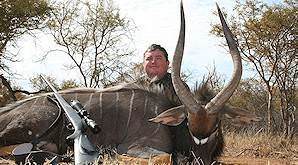
Known as "the kudu's fluffy cousin", the elusive Nyala offers a striking trophy for the dedicated hunter. Male nyalas are typically dark brown or slate grey in color with a series of white stripes down their sides.
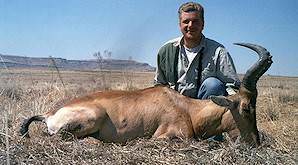
Red hartebeest have been nicknamed the "Harley-Davidson" of antelope species due to the curvature of their horns. Red Hartebeest prefer open plains and grassland savanna for grazing.
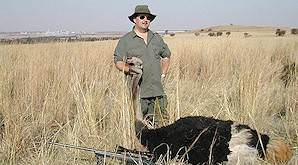
The large, flightless bird is popular for its downy feathers, delicious lean meat and fine leather hide. Ostriches can reach speeds of up to 70km/h (43mph). They are found throughout Southern Africa in both bushveld and arid regions.
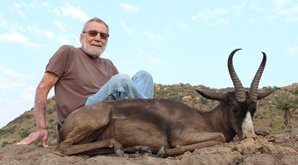
The black springbok only deviates from the common springbok in its coloring. As such, it will typically be spotted amongst larger herds of common springbok and will require the hunter to carefully single it out.
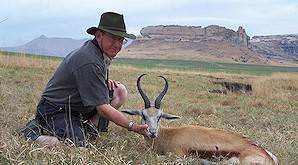
The springbok is South Africa's national animal. Its Afrikaans name literally translates to "jump buck", as these antelope are accomplished jumpers when threatened and "pronk" in a Pogo-stick manner when excited.
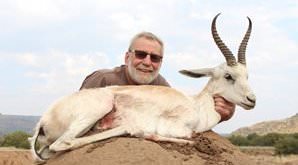
White springbok are not albino, but rather white morphs of the common springbok. Stark white with a slightly darker-hued side stripe, white springbok naturally occur in herds of common springbok.
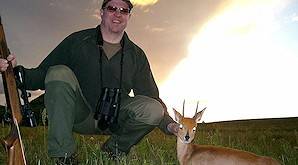
The steenbok is the largest antelope in the "Little Five" group. That being said, it is still a very small creature, reaching 52cm at shoulder height. Steenbok will lie low in the grass to avoid detection.
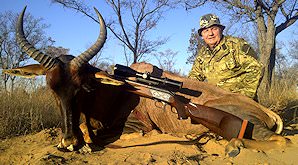
Tsessebe are notoriously fast antelope and can reach speeds of up to 80km/h (50mph) and over. However, tsessebe will often pause and look behind them when spooked, rather than run away completely.
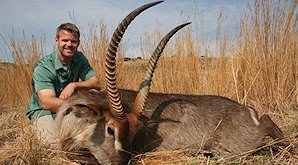
Waterbuck occur widely throughout sub-Saharan Africa. As their name implies, they are typically found near water sources such as river and dams. The males boast impressive V-shaped horns.
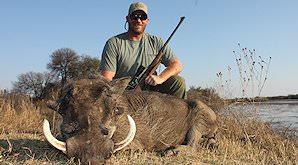
Warthog are a popular plains game species that can be hunted on a hunting safari in Southern Africa. Their sharp tusks can prove quite dangerous. Unlike other wild pigs, warthogs have adapted to grazing and savanna habits.
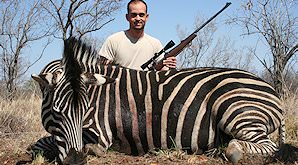
Also known as plains zebra, Burchell's zebra is a popular plains game trophy. It is often difficult to determine sex at distance, so observing your target's behavior is important to ensure you are shooting a stallion rather than a mare.